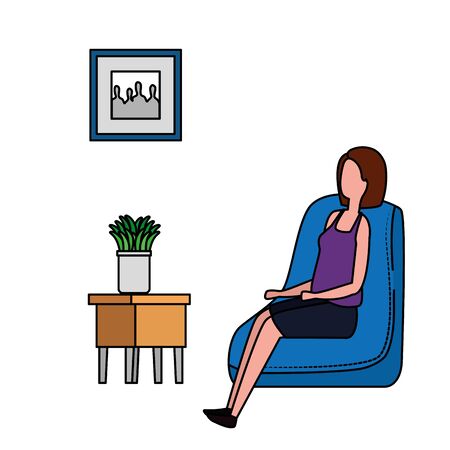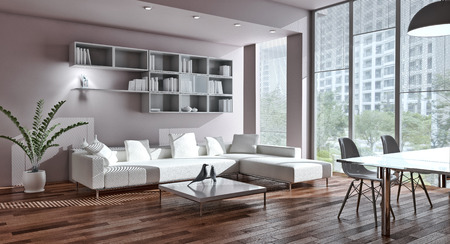Introduction to British Period Homes
Across the United Kingdom, period properties stand as living testaments to architectural heritage and cultural identity. From the stately Georgian terraces of Bath to the charming Victorian semis in London’s leafy suburbs, these homes are celebrated for their unique character, craftsmanship, and timeless appeal. Distinctive features such as ornate cornicing, original fireplaces, sash windows, and solid timber doors evoke a sense of history and nostalgia that is deeply cherished by British homeowners. The enduring allure of these properties lies not only in their aesthetic details but also in their connection to Britain’s evolving social fabric. As renovation projects become increasingly popular, understanding the intrinsic value and cultural significance of period homes is crucial. This foundation enables renovators to sensitively balance the preservation of traditional charm with contemporary influences—particularly when it comes to integrating modern colour psychology into historic interiors.
2. Understanding Colour Psychology in Modern Interiors
Modern British renovations are increasingly driven by a nuanced understanding of colour psychology, blending aesthetic appeal with tangible effects on occupants’ wellbeing. Today’s homeowners and designers are no longer selecting paint swatches solely for their visual harmony with period features; instead, they’re considering how each hue can subtly influence mood and behaviour within a space.
Current Trends in British Colour Psychology
The contemporary British approach sees a shift towards colour palettes that reflect both the heritage of a property and the emotional needs of its inhabitants. Soft sage greens, rich navy blues, and muted blush pinks are favoured not just for their compatibility with traditional architectural details but also for their proven psychological benefits.
Impact of Colour Choices on Mood and Behaviour
| Colour | Psychological Impact | Common Use in Renovations |
|---|---|---|
| Sage Green | Calming, restorative, evokes nature | Kitchens, living rooms, bedrooms |
| Navy Blue | Grounding, encourages focus, sophistication | Studies, hallways, feature walls |
| Blush Pink | Soothing, uplifting, promotes positivity | Bedrooms, bathrooms, accent details |
| Mellow Ochre | Warmth, cosiness, energising without being overwhelming | Dining rooms, entryways |
Balancing Heritage and Wellbeing through Colour
This thoughtful interplay between historical context and modern psychological research ensures that renovated spaces do more than simply look the part—they actively contribute to daily comfort and happiness. By carefully curating colour schemes that respect period charm while enhancing contemporary living, British renovators are setting new standards in home restoration that prioritise both character and emotional wellness.

3. Respecting Heritage Features During Renovation
When undertaking a British home renovation, maintaining the delicate balance between period charm and modern colour psychology requires more than just an eye for design—it demands a deep respect for the property’s heritage features. Sash windows, ornate cornices, and original fireplaces are not merely aesthetic details; they are integral elements of the building’s historic character. The best practice is to conduct a thorough assessment before any refurbishment work begins, identifying which features are original and evaluating their condition. Where possible, restoration should always take precedence over replacement. For example, sash windows can often be repaired with specialist joinery skills to address draughts or damaged cords, preserving their visual authenticity while improving thermal performance. Similarly, traditional plaster cornices should be carefully cleaned, stabilised, and, if necessary, recast by craftsmen familiar with period techniques. Original fireplaces—whether marble, cast iron or tiled—benefit from gentle cleaning and expert restoration to bring them back to life without compromising their age-old patina. It is also crucial to use appropriate materials and methods: lime plaster instead of gypsum on period walls, breathable paints that allow for moisture movement, and traditional glaziers’ putty on window repairs. By prioritising these careful interventions, renovators ensure that new colour schemes inspired by contemporary psychology enhance rather than overpower the home’s heritage narrative.
4. Blending Historical Character with Contemporary Hues
Achieving a harmonious balance between period charm and modern colour psychology is a core consideration for British renovations. When selecting a colour palette, it’s essential to respect the building’s original features while injecting a contemporary edge that resonates with today’s aesthetic preferences. The key lies in understanding both the architectural heritage of your home and the emotional impact of colours as understood through modern design principles.
Choosing Colours that Complement Period Features
Start by identifying the unique details of your property—whether it’s ornate cornices, sash windows, or exposed brickwork. Opt for hues that accentuate these features rather than overpower them. For example, muted heritage tones such as sage green, dusky blue, and soft greys are ideal for highlighting mouldings and skirting boards in Victorian or Edwardian homes. These shades provide a subtle nod to tradition while setting a calm backdrop for more modern furnishings.
Incorporating Modern Colour Psychology
Contemporary colour psychology suggests certain shades evoke specific moods: greens foster tranquillity, yellows promote optimism, and blues encourage relaxation. Use this knowledge to influence how each room feels, ensuring that new tones not only complement period details but also enhance well-being. For instance, pairing warm neutrals with vibrant accents—like mustard or teal—can revitalise communal spaces without diminishing their historic character.
Sample Colour Combinations for Period Properties
| Period Feature | Traditional Base Colour | Contemporary Accent | Mood/Effect |
|---|---|---|---|
| Victorian Fireplace | Deep Olive Green | Burnished Copper | Inviting & Grounded |
| Edwardian Panelling | Pale Grey | Saffron Yellow | Bright & Uplifting |
| Cottage Beams | Creamy White | Aegean Blue | Fresh & Serene |
| Georgian Sash Windows | Dove Grey | Moss Green | Calm & Timeless |
Practical Tips for Cohesive Results
– Test paint samples on large patches and observe them at different times of day.
– Use contemporary colours on feature walls or accessories rather than dominant surfaces.
– Balance bold shades with neutral elements to avoid overwhelming the space.
– Retain or restore original woodwork and use contrasting modern hues to highlight craftsmanship.
– Consider period-appropriate finishes such as matt emulsions or eggshells to maintain authenticity.
5. British Case Studies: Successful Renovation Stories
Across the UK, a growing number of renovation projects showcase how period charm and contemporary colour psychology can be seamlessly united to create spaces that honour heritage while feeling fresh and relevant. One standout example is a Victorian terrace in Bath, where original cornicing and sash windows have been lovingly restored, then balanced with a calming palette of sage green and muted blush—tones chosen for their soothing effects according to modern colour psychology. The result is a home that feels both timeless and tranquil.
In Edinburgh’s New Town, a Georgian flat underwent a transformation where classic architectural features were retained, but bold navy and mustard accents were introduced in communal areas. These colours, selected for their energising properties, help counteract the often grey Scottish skies and bring warmth into the historic setting. In both these cases, careful consultation with local heritage officers ensured period details remained intact while allowing for creative freedom with colour.
London offers numerous examples as well. A converted warehouse in Shoreditch juxtaposes exposed brickwork and iron beams—a nod to its industrial past—with contemporary pops of teal and ochre. These hues, informed by psychological research on creativity and focus, elevate open-plan living spaces without detracting from the building’s storied character. Similarly, in the Cotswolds, a Grade II listed cottage combines original flagstone floors and beamed ceilings with soft pastel walls, creating an uplifting environment that aligns with biophilic design principles and modern wellness trends.
These case studies demonstrate that, when executed thoughtfully, British renovations can celebrate the best of both worlds: respecting history while embracing the advantages of modern design thinking. By drawing on colour psychology and local context, homeowners across the UK are crafting interiors that are not only beautiful but also enhance wellbeing—a testament to the enduring value of balancing old and new.
6. Maintenance Considerations for Lasting Appeal
Once the ideal balance between period charm and contemporary colour psychology has been achieved, ongoing maintenance becomes crucial to ensure your renovation stands the test of time. British homes, particularly those with heritage features, require a tailored approach to upkeep that respects both traditional materials and modern design elements.
Structural Upkeep: Preserving Character and Stability
Start by establishing a routine inspection schedule for structural components such as timber beams, sash windows, and original plasterwork. Address minor issues—like flaking paint or damp patches—promptly to prevent further deterioration. When carrying out repairs, select materials and techniques sympathetic to the building’s age, ensuring that any interventions remain reversible wherever possible.
Routine Care for Colour Schemes
Contemporary colour palettes can transform interiors but need thoughtful aftercare to retain their intended vibrancy. Use high-quality, washable paints for high-traffic areas, especially in period properties where walls may be more prone to marks or moisture ingress. Dust and gently wipe painted surfaces regularly, avoiding harsh chemicals that could dull finishes or damage underlying historic fabric.
Protecting Original Features
Original fireplaces, mouldings, and floorboards benefit from specialist cleaning products designed for historic materials. Waxing wooden floors periodically prevents drying and cracking while allowing their natural patina to shine alongside fresh colour schemes. If new hues have been introduced to accentuate period details, check for fading or discolouration from sunlight and rotate furnishings as needed.
Integrating Modern Fixtures Without Compromising Integrity
When maintaining modern additions like LED lighting or contemporary radiators, ensure their placement does not undermine the aesthetic or physical integrity of period features. Opt for minimally invasive installation methods and review manufacturer guidelines regularly to extend service life without unnecessary disruption.
By combining regular structural assessments with gentle cleaning routines and mindful product selection, you can safeguard both the authenticity of your property’s heritage elements and the freshness of newly introduced colours. This commitment not only protects your investment but also allows your home’s unique blend of old and new to flourish within the context of British architectural tradition.

